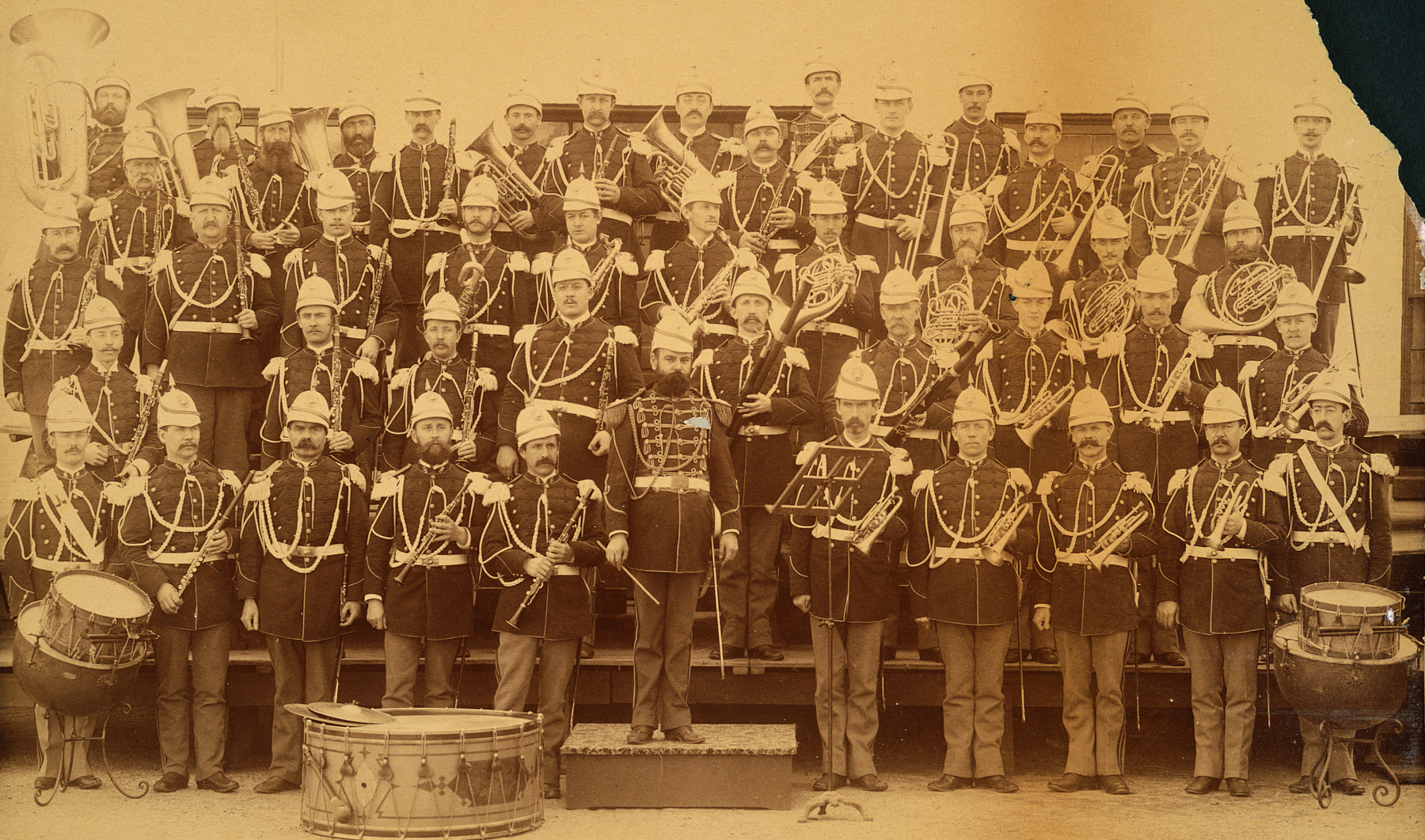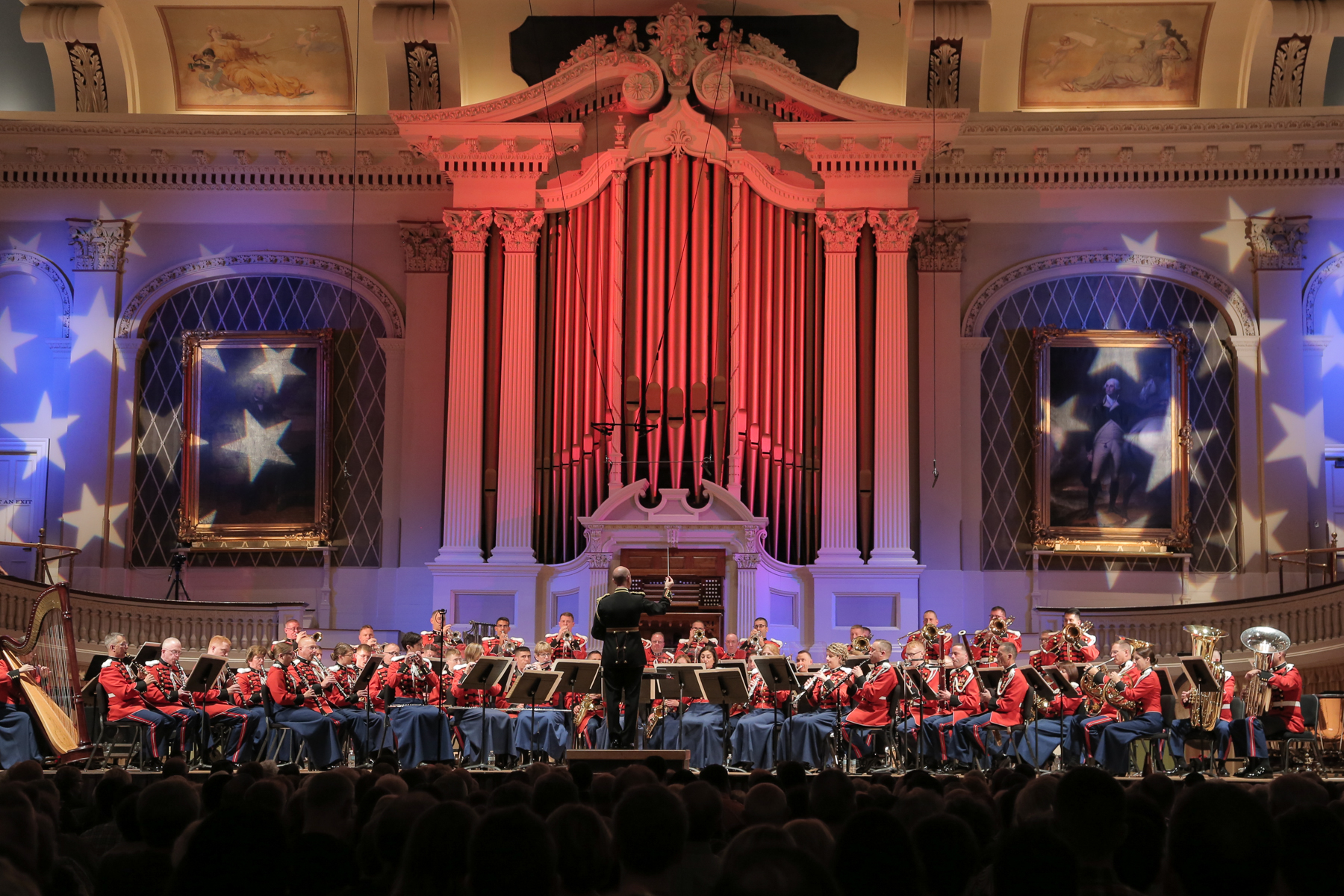
Since 1891, Americans far and wide have enjoyed the tradition of seeing the United States Marine Band perform on tour. The fact that the Marine Band tours the U.S. is, in large part, thanks to the band’s legendary 17th director, John Philip Sousa.
Find information about upcoming Marine Band tours here.
Years before musicians of “The President’s Own” packed up their instruments and hit the road, Sousa was creating a name for both himself and the ensemble. By the time he became Marine Band director in 1880, his reputation as a composer and march-writer was steadily growing, and his established musical prowess came to elevate the ensemble to a new level of excellence.
The Marine Band was Sousa’s first experience conducting a military band, and he approached musical matters unlike most of his predecessors. He replaced much of the music in the library with symphonic transcriptions and changed the instrumentation to meet his needs. Rehearsals became exceptionally strict, and he shaped his musicians into the country’s premier military band. Marine Band concerts began to attract audiences of discerning musical taste, and the band’s reputation began to spread widely.
Under Sousa the Marine Band also made its first recordings. As a way to demonstrate its new invention, the Columbia Phonograph Company chose to record the Marine Band, releasing 60 wax recording cylinders in the fall of 1890. By 1897, more than 400 different titles were available for sale, placing Sousa’s marches among the first and most popular pieces ever recorded, and the Marine Band one of the world's first “recording stars.”
“...it would be tough on Washington if both of us were away at the same time. I have thought it over, and believe the country would rather hear you than see me; so you have my permission to go.”
By this time, Sousa had taken the band on short trips to perform in nearby cities such as Baltimore and Philadelphia, but as the band’s popularity mounted, he saw an opportunity to reach more audiences across the country by going on tour.
Sousa’s initial requests for permission to take the band on such a trip were denied, due to the band’s extremely busy concert schedule in Washington, D.C., and responsibilities at the White House. But Sousa persisted and eventually presented his request directly to President Benjamin Harrison. In his autobiography, “Marching Along,” Sousa recalls what transpired. He wrote:
My years in Washington had taught me that if you wish to see the President, see his wife first. So I asked for Mrs. Harrison. She liked the idea of a tour and promised to speak to the President about it. Next morning I was summoned to see the President. As I entered the room, he rose, shook hands cordially, and leading me to one of the windows which faced the Potomac River, said, “Mrs. Harrison tells me that you are anxious to make a tour with the band. I was thinking myself of going out of town, and”—with a smile—“it would be tough on Washington if both of us were away at the same time. I have thought it over, and believe the country would rather hear you than see me; so you have my permission to go.”
On April 1, 1891, the Marine Band held its first tour concert – a matinee – at Bunnell’s Bridgeport Theatre in Bridgeport, Conn. It was followed that evening by a second concert at the Hyperion Theatre in New Haven. From there, the band spent a month performing in 32 cities across the Northeast and Midwest.
The Marine Band was well-received by audiences in each city and heavily lauded by reporters and critics. One writer for The Metronome described an experience from a Boston concert, mentioning that the Marine Band “made a most favorable impression upon our concert goers, who unanimously concede the fact that no military band excepting Gilmore’s has been heard in Boston, since the Peace Jubilee, that will at all compare with the Marine Band.”
He continued, remarking the overwhelming call for encores by the audience and a packed house:
Recalls were the order of the evening, and were most courteously responded to in all cases: lengthening the programme to such an extent that hundreds of people were forced to retire before the close of the concert in order to make railway connections. Every seat in the vast auditorium was taken and the financial result must have been highly satisfactory to the management. Should the organization visit us again, during the spring months as is now contemplated, a hearty welcome will be assured.
Programmed selections included Sousa’s unique blend of popular music and orchestral transcriptions, as well as his own compositions. Although the audiences clamored for Sousa’s marches, he included them only as encores, offering his audiences what he called the “solid fare” of Richard Wagner, Georges Bizet, Giuseppi Verdi, Franz Schubert, Felix Mendelssohn, and others. The band was even supported by the guest vocal talent of soprano Mademoiselle Maria Decca, enhancing the musical variety for audiences, and foreshadowing the addition of vocalists to the Marine Band decades later.
In 1892, Sousa toured with the Marine Band once again, this time with a cross-country excursion to the westernmost reaches of the continental U.S. For the first time, the music of the Marine Band reached audiences from sea to shining sea, performing in 15 states and the Utah Territory over the course of nearly two months. View an 1892 concert program.
After the Marine Band’s second tour proved to be yet another smashing success, Sousa was approached by his manager, David Blakely, with an idea that Sousa should organize his own touring civilian concert band. The Marine Band tours indicated the success Sousa could see outside of the military, and on July 30, 1892, he resigned as Director of the Marine Band to form his own “Sousa Band.”
After Sousa’s departure, the Marine Band did not tour again until 1895, the only one held during Francesco Fanciulli’s tenure as director. The band began touring with increasing regularity during the early 20th century under the direction of William H. Santelmann, including five tours between 1901 and 1915. In 1920, the Marine Band tour finally became an annual engagement which has continued every year since, except in times of war, sequestration and public health crises.

Though the Marine Band is a historical organization steeped in tradition, it remains a forward-thinking and musically innovative ensemble. Audiences now enjoy the elite musicianship of “The President’s Own” performing quintessential patriotic and martial favorites alongside selections from the wind band repertoire, works by contemporary composers, scores from film and theatre, and more.
In present day, approximately 65 musicians from the band tour during the month of October, performing in one of the country's five designated tour regions: West Coast, Southwest, Southeast, Northeast and Midwest. Concerts last two hours and take place evenings Monday-Saturday and Sunday afternoons. These events are free and open to the public, generously sponsored by local community organizations such as schools, veteran groups and performance venues.
The Marine Band also uses tour as an opportunity to make an educational impact. Each year, thousands of music students from diverse socioeconomic backgrounds have the opportunity to interact with Marine Band musicians through free clinics, classroom performances and discussions. These clinics often reach music programs that could not otherwise host professionally-trained musicians in the classroom.
The Marine Band continues to tour the country year after year, just as it first did in 1891, bringing a White House experience to grand concert halls in major cities and school gymnasiums in small towns alike. For many, seeing “The President’s Own” play on tour is a beloved memory shared across generations, and it remains an important facet of the American musical experience.